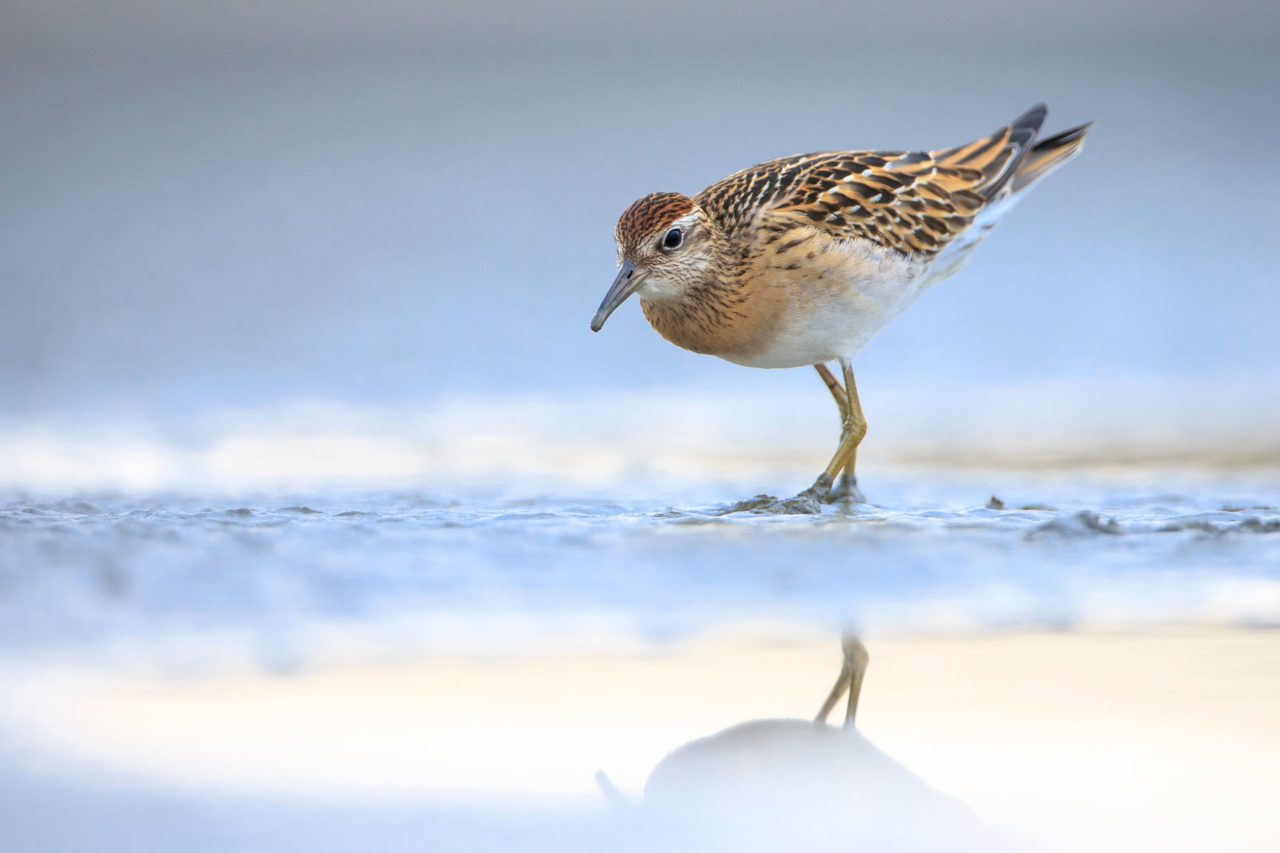One of my favorite things in nature is getting up close and personal to birds in the wild.
Most birds are incredibly shy about being approached, but with the right techniques, it’s possible to earn their trust and have some truly amazing close encounters!
If you want to get closer to birds, the most important thing is moving slowly enough that you don’t make them nervous.
Birds will display nervous behavior if you try to approach too quickly. It’s important to recognize nervous body language so you can slow down and give the bird time to relax.
This strategy works with all types of birds in all different habitats. Whether your goal is to get better at nature photography, or the simple joy of interacting up close with wildlife.
I’ve spent a crazy amount of time over the years honing my skills at getting closer to birds and today I’m going to share all my secrets to help you do this too.
Recognize and React to Behaviors
Birds frequently communicate with us through their behavior, letting us know how at ease they are in our company and how likely they are to leave. You can control your approach and determine when to stop and wait and when it’s acceptable to move forward by being aware of these cues. Standing more straight, stopping what they’re doing, and raising an alarm are indications that a bird is scared or becoming more alert. Before leaving a perch, certain birds, such as raptors, will bend forward and let go of their waste. Apart from the overt indications, diverse species also provide more nuanced cues that can only be discovered through firsthand experience and scrutiny.
Observe how neighboring species behave as they might frighten or disturb the bird of interest. Certain ducks and geese, yellowlegs, stilts, and other hypervigilant birds may make it impossible for you to get close to the subject of your photo. Generally speaking, the more birds surrounding your target bird, the more likely it is that a single species or individual will send the entire flock skydiving. Approach isolated birds when you can.
Keep a Low Profile
If you stay low to the ground, crawling or sliding on your belly while pushing your tripod-mounted camera ahead of you, you can get surprisingly close to many birds, especially shorebirds. Numerous times, as I lay prone and mostly motionless, flocks of shorebirds have surrounded me at arm’s length as if I weren’t even there. Likewise, it is usually preferable to approach your subjects from below rather than loom over them when working in uneven terrain, on hillsides, or even in a ditch.

Practice with Habituated and Tame Birds
Habituated birds are excellent subjects for individuals learning bird photography or honing new skills. And often you won’t have to go far from home.
Many bird species’ individuals will grow accustomed to humans if they interact with them on a daily basis without experiencing harassment. This is more prevalent in urban and suburban areas, as well as in state, federal, and private parks and wildlife refuges where a high volume of people visit and the wildlife is protected. In addition to gulls, terns, pelicans, and shorebirds at public beaches, ducks and wading birds in city parks are also excellent choices.
It won’t take long to notice that some bird species, despite their frequent encounters with humans, are not accustomed to them. Belted Kingfishers, for instance, are frequently found in parks, waterfronts, and marinas, but they are notoriously difficult to approach.
Certain bird species are simply domesticated; regardless of whether they have ever seen a human, they do not fear people. Boreal forest birds, such as spruce grouse, northern hawk owls, great gray owls, and boreal owls, are typically incredibly gentle. Birds such as boobies, albatrosses, puffins, murres, auklets, and phalaropes that live their entire lives at sea also tend to be blind to humans. Juveniles that have recently left the breeding grounds of some species can be remarkably tame in comparison to adults. Examples include juvenile Snowy Owls and many shorebird species. Occasionally, you may come across birds that are tame for unknown reasons. Lucky you!.
Don’t give up doesn’t mean you should chase after a bird that is obviously disturbed or that you should flush a certain bird more than once. I mean don’t give up generally. After a few unsuccessful attempts, it is easy to give up and decide that photographing a specific species is simply not feasible at a particular location. I’m not sure how many times I’ve fought the urge to give up and given it one more shot, which led to the completion of the ideal composition right as the light was getting nice. Even after such experiences, I occasionally need to remind myself to persevere.

FAQ
How do you get close to a bird without scaring it?
How do you get wild birds to trust you?